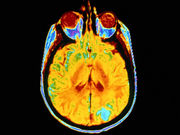Mixed Alzheimer’s disease neuropathic changes more frequent than pure ADNC among those with MCI
TUESDAY, Feb. 28, 2017 (HealthDay News) — A diagnosis of mild cognitive impairment (MCI) is frequently associated with comorbid neuropathologies, according to a study published online Feb. 22 in the Annals of Neurology.
Erin L. Abner, Ph.D., from the University of Kentucky in Lexington, and colleagues used data drawn from a large autopsy series of 1,337 individuals followed longitudinally from normal or MCI status to death from four U.S. Alzheimer’s Disease (AD) Centers.
The researchers found that the final clinical diagnoses varied for the 874 individuals ever diagnosed with MCI: 39.2, 46.8, and 13.9 percent died with an MCI diagnosis, a dementia diagnosis, and a diagnosis of intact cognition, respectively. Those with a diagnosis of intact cognition had pathological features resembling those with a final clinical diagnosis of MCI. Primary age-related tauopathy and brain arteriolosclerosis pathology were more severe in MCI than cognitively intact controls (P < 0.05 and 0.001, respectively). Mixed AD neuropathologic changes (ADNC; one or more comorbid pathology) were more frequent than pure ADNC pathology among the group that remained MCI until death (55 versus 22 percent); the remaining 22 percent of cases were suspected non-Alzheimer’s pathology. Seventy-four percent of individuals who died with MCI did not have high level ADNC, Lewy body disease, or hippocampal sclerosis pathologies; cerebrovascular pathologies were enriched in this group.
“MCI diagnosis usually was associated with comorbid neuropathologies; less than one-quarter of MCI cases showed ‘pure’ AD at autopsy,” the authors write.
Copyright © 2017 HealthDay. All rights reserved.








